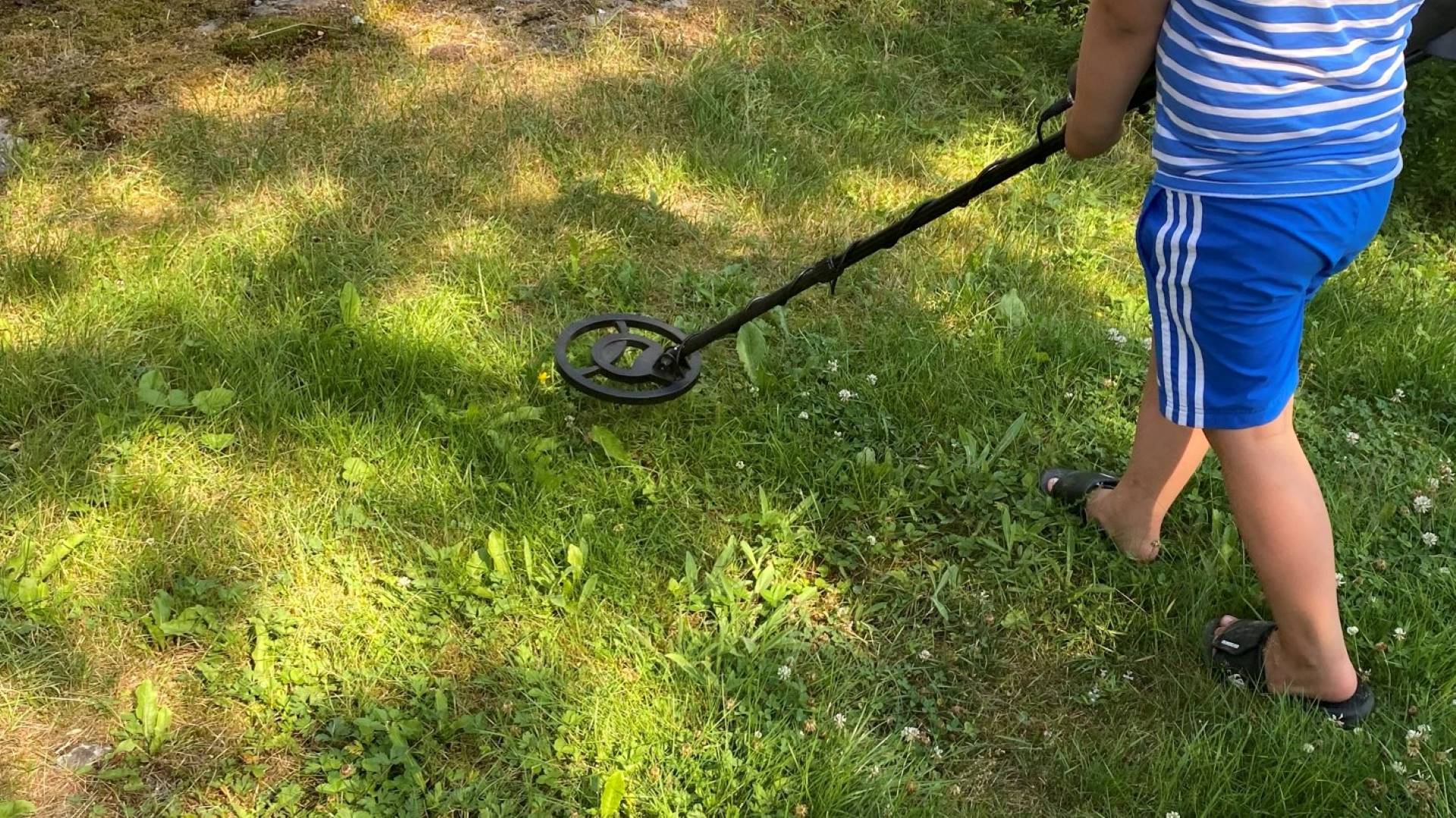Metal Detecting Uses
by Admin
Posted on 01-10-2023 02:28 PM

metal
detectors apparently date back to the shooting of us president james a. Garfield in july 1881. One of the bullets aimed at the president lodged inside his body and couldn't be found. Telephone pioneer alexander graham bell promptly cobbled together an electromagnetic metal-locating device called an induction balance , based on an earlier invention by german physicist heinrich wilhelm dove. Although the bullet wasn't found and the president later died, bell's device did work correctly, and many people credit it as the very first electromagnetic metal locator. Artwork: left: find that bullet! this sketch by william a. Skinkle, from frank leslie's illustrated newspaper of august 20, 1881, shows rather a lot of doctors (!) using bell's induction balance to find the bullet lost in the president's body.

Thirteen-year-old milly hardwick was only on her third metal-detecting expedition when she made a thrilling discovery in 2021 in a field near royston, england. The high -pitched squeal of her detector was followed by giddy laughter when milly’s father dug up a hoard of bronze-age ax heads. The solid-bronze axes would have been some of the earliest metal weapons made in england as early as 2300 b. C. Milly and her father unearthed 65 objects that day, and a follow-up archeological expedition found a nearby hoard containing more than 135 objects.
Beat frequency induction
There are several types. Three common ones are:
bfo or beat frequency oscillator. Entry-level detectors typically contain a bfo. It has a large coil in the search head and a smaller one in the control box. Each has a pulse oscillator but on slightly different frequencies. The pulses generate radio waves to create audible tones. The tones change when a magnetic field interferes with them. They are also not as accurate or as controllable. Vlf detectors. These are quite popular and tend to be the most common. These very low frequency
devices
use a single frequency between 6 to 30 khz and rely on phase shifting between the transmitted and received signals.

บริเวณปลอดโลหะ ( Metal Free Area )
สภาพของสนามแม่เหล็กไฟฟ้าที่เครื่องสร้าง ขึ้นมีบริเวณครอบคลุมถึงบริเวณหน้าอุโมงค์ และบริเวณหลังอุโมงค์ โดยบริเวณที่มีสนามแม่เหล็กไฟฟ้าครอบคลุมไปถึงนี้จะกำหนดเป็นบริเวณห้ามมี โลหะติดตั้งในบริเวณที่มีสนามแม่เหล็กไฟฟ้าครอบคลุมอยู่ เรียกบริเวณนี้ว่า metalfreearea หรือ mfa ซึ่งมีบริเวณดังกล่าวมีขนาดพื้นที่ 1. 5 เท่าของเส้นทแยงมุมของอุโมงค์ มีลักษณะดังรูปภาพที่ 4 การ ติดตั้งเครื่องตรวจจับโลหะนั้นจะห้ามมีการเคลื่อนย้ายชิ้นโลหะในบริเวณสอง เท่าของเส้นทแยงมุมของอุโมงค์เพื่อไม่ให้เกิดการรบกวนสนามแม่เหล็กไฟฟ้าดัง นั้นการออกแบบให้อุโมงค์มีขนาดเล็กลงก็จะช่วยลดขนาดของพื้นที่ mfa ได้ ภาพแสดงบริเวณ mfa.
One of the most important considerations in choosing a place to metal detect is who owns it. A friend or family member? state or local government? a total stranger? private property permissions can be some of the best places to hunt, but you must have permission from the landowner to be there. To do otherwise is illegal and reflects poorly on those who responsibly enjoy the hobby of metal detecting. The feasibility of detecting on public land varies from country to country and state to state, if you’re in the us. As a general rule, any publicly owned historical site is going to be off-limits.
Metal detecting is allowed in certain areas of our parks system. Those interested in metal detecting must obtain a metal detecting excavation permit. Permits may be issued under the approval of the parks and recreation director. Permits are limited to a calendar year (i. E. A permit issued in march would expire on december 31). The use of metal detectors is limited to certain parks. Exceptions are allowed in restricted areas to find a specific lost item or to assist with official investigations and must be approved. A metal detecting excavation permit is free permitted sites for.
Metal Detecting Beginners Guide
For a lot of folks, they hear the term ‘metal detecting’ and automatically imagine the crazy old guy they saw walking up and down the shoreline on their beach vacation last summer. But when you look at this surprisingly addictive hobby, there’s so much more to it than just looking funny at the beach. In this guide, you’ll learn what this hobby is all about, why it has become so popular, what you’ll need to get started, and so much more! chapter 1: how to get started metal detecting what you need to know to get started when you’re first starting out and not sure if you’ll even like the hobby (or if budget is a concern), you’ll want to get yourself an entry-level detector, a few accessories, and definitely some know-how.